Annapurna Base Camp (ABC) Trek is generally safe for most trekkers if all the precautions are taken into consideration and proper planning is made. It is a popular trail with good infrastructure and hence accessible to the majority. Nevertheless, as in all high altitude treks, there are always some risks involved. Knowing these risks and the ways to cope with them is the key to a safe and successful adventure.
The ABC Trek is Nepal’s best and most well known trekking route. The trails lead you through lush valleys, timbered forests and ethnic Gurung villages before you arrive at the base (4,130 meters) of the gigantic Annapurna (8,091 meters).
The trek can vary between 6 to 12 days depending on the route. It offers a striking panorama of peaks like Machapuchare, Hiunchuli and Annapurna I, among many others.
Of moderate difficulty, the trek is suitable for fairly fit novice trekkers and veterans as well. Even the trek can be done by female and solo travelers without an issue. Although caution and local expertise and knowledge are necessary.
While the trek is basically safe, there are some associated risks in the way of altitude sickness, unexpected weather, ruggedness and limited facilities. These can be prevented by trekking in the favorable season (autumn or spring), ascending at a slow pace, staying hydrated with plenty of water and hiring a licensed porter or guide.
Besides, having proper gear, insurance coverage and the appropriate permits will also go a long way to ensure a safe and effortless trekking experience.
With the proper preparation and the right mindset, the ABC trek is an incredibly rewarding and life-transforming adventure. Putting safety first and remaining flexible allows you to enjoy the unique blend of natural appeal, culture and personal enrichment that the trek provides.
Is Annapurna Base Camp Trek Safe for Beginners?
Absolutely, the ABC trek is very accessible for first-time trekkers. However, they need to come prepared and have decent planning. It is one of Nepal’s lesser demanding high altitude treks and generally a deeply rewarding experience. The trek features a well marked route and involves a relaxed pace of ascent. Plus, there are teahouses and support services along the way.
People with basic to average fitness and the ability to walk 5–7 hours daily can accomplish the trek safely. However, you should be aware of some common challenges like steep ascents, volatile weather and thinner air as you climb higher.
In order to stay safe, beginner trekkers need to prepare beforehand for the trek. Get yourself ready with cardio and strength training, purchase the right gear and choose an itinerary with acclimatization days. It is advised to trek with a certified guide and a porter to get help with navigation, logistics, luggage carriage and emergency response. Choosing the right time of year is also necessary to ensure better trail conditions and visibility.
Is Annapurna Base Camp Trek Safe for Solo Travelers?
Yes, solo travelers can safely complete the Annapurna Base Camp Trek. Men and women do it single-handedly every year. The trek is well frequented and you can find hospitable teahouse operators and friendly local communities.
Having said this, solo travelers need to follow precautions against common threats like altitude sickness, unpredictable weather and the chances of injuries or losing the ways, especially in remote trail segments. Although Nepal is a welcoming and fairly secure nation, independent trekking always involves a higher level of personal accountability.
In order to stay safe, solo trekkers need to stick to the trail, check the weather and trail conditions every day and inform someone close of their plans. Also, have a map, local SIM card and a GPS tracking device for communication and location. It is also a good idea to team up with other trekkers along the way. Hiring a local guide or porter is another very good option for an extra layer of safety.
With due consideration, planning and caution for the mountain environment, solo trekkers can definitely have the ABC trek as a safe, empowering and lifelong memorable experience.
Is Annapurna Base Camp Trek Safe for Female Trekkers?
Yes, the ABC Trek is safe for solo female trekkers or women’s groups. Thousands of women have completed the trek each year. The popularity of the path, friendliness of locals and the high concentration of other trekkers make the journey very safe. However, as with any one trip, female trekkers must be aware, listen to their gut and make good judgment.
For enhanced safety and comfort, some female trekkers choose to trek with a guide or in a small group of friends through a licensed agency. Having a female guide is also an option in Nepal and can be even more reassuring. Avoiding night hiking, dressing modestly and having a private room in teahouses when possible are the measures to enhance the overall safety.
ABC Trek Guide vs. Without Guide: What’s Safer?
To trek the Annapurna Base Camp with a guide is the safer option, especially for someone without experience at high altitudes or in the region. A licensed guide is worth the expense, leading the trail, managing the logistics, monitoring your health, looking for symptoms of altitude sickness and offering cultural insights along the way.
They break the language barriers and help facilitate communication with the residents. Guides can also organize rescue services in case of emergencies, a big advantage while being in remote areas.
That being said, seasoned trekkers do opt to trek without a guide, especially if they are skilled at navigation and acquainted with high-altitude terrain. The ABC trail is well-trodden and quite busy, so it’s one of the easier treks to attempt on your own.
Trekking without a guide, however, entails taking complete responsibility for your safety, your pacing and your decisions. Solo trekkers need to be particularly careful regarding weather, route-finding and emergency communication. Lastly, while it is possible to safely hike without a guide, having one reduces risks and enhances the experience for the majority of tourists.
A porter is also vital who carries your heavy backpack. It reduces physical strain and allows you to focus on the trek itself. Both guides and porters contribute significantly to safety, in addition to the quality of the experience.
What If Something Goes Wrong During the ABC Trek?
In the unlikely event of anything going wrong on the ABC Trek, there are some basic medical facilities along the way to treat initially. The primary health centers in route villages take care of minor illnesses and injuries.
If you are feeling unwell due to common trekking conditions like blisters, mild altitude illness, minor cuts or stomach upset, you will get attended to at the trail health posts or clinics. Besides, your guide will also carry a basic first aid kit.
Good rest, adequate fluid intake, proper hygiene and a nutritious diet also go a long way in maintaining your health and remaining active. For more serious illnesses such as altitude sickness or accidents that require urgent treatment, there is a helicopter rescue.
The rescues can be arranged through your guide or trekking company. The helicopters tend to fly out of Pokhara or Kathmandu and are able to land at prior agreed points such as Deurali, Machapuchare Base Camp or even ABC itself. However, this service is extremely expensive unless carried out by insurance.
Is Altitude Sickness a Risk on the ABC Trek?
Yes, altitude sickness is very much possible on the ABC Trek. The trek reaches its peak at the Annapurna Base Camp (4,130 metres). The air here is very thin with scarce oxygen. This ultimately results in altitude sickness. The common symptoms are headaches, dizziness, nausea and fatigue. While the risk is lower than for other alpine treks, it still must be taken well care of as it can strike to anyone, regardless of age or fitness level.
In order to minimize the possibility of altitude sickness, climb slowly, hydrate properly and listen to your body. Avoid alcohol and eat light meals consisting of vitamins, proteins and minerals. Drugs like Diamox can also be taken as per the prescription by the physician.
In the event the symptoms still don’t go away, descending to a lower altitude is the best thing you can do. With the preventive care, most trekkers are able to successfully complete the ABC trek without being extremely affected by altitude sickness.
What Are the Trail and Weather Conditions Like?
Weather and trail conditions in the Annapurna Base Camp Trek vary greatly with the season. Generally, the trail is well-maintained and accessible to all trek participants with good physical health and average fitness.
The trail has a mix of stone steps, forest path, suspension bridges and rugged segments. While the whole trail is a gentle rise, some areas, especially around Chhomrong, Deurali and the last climb to base camp, are steep drops.
Weather changes very quickly in the Himalayas and you must be ready for sun, cloud and wind chill in a single day. First, you should find out the Annapurna Base Camp Trek best season. Spring and autumn are the best times to go trekking with generally clear and settled weather, warm days and cool evenings.
Winter is marked by snowy and icy conditions at higher altitudes and the trek is tougher. There is much rain, leeches and poor visibility during the monsoon months, which renders the hike unpleasant and unsafe.
Adequate layering, water-resistant gear and local weather forecast are necessary to handle the trail as well as weather conditions effectively.
What Should You Pack for a Safe Trek?
It’s essential to bring the right gear for a safe and comfortable ABC Trek. Smart packing not just guarantees your safety, but can even make the whole trekking experience more fun and convenient.
Himalayan weather is unpredictable. On top of that, the trek involves walking both warm lower elevation and cold alpine zones. So, you will have to layer your clothes. You will need moisture wicking base layers, an insulating middle layer and a waterproof outer shell.
Likewise, strong hiking boots with good traction, warm socks, gloves, a hat and UV protective sunglasses are necessities. A good quality backpack (30–50L) with a rain cover and a daypack is also required.
Carry a first-aid kit, personal medication, water purification filter/tablets, headlamp, trekking poles and high SPF sunscreen. A hydration pack or refillable water bottle, trail snacks, a passport and permits are also a must.
For solo trekkers, a map, a GPS application and a local SIM card are a must to pack. Altitude sickness medication (like Diamox) is also carried by many trekkers after consulting a physician.
Is Travel Insurance Necessary for a Safe ABC Trek?
Yes, travel insurance is strongly recommended while going for the Annapurna Base Camp Trek. High-altitude trekking does involve some risks, including altitude sickness, accidents and sudden weather fluctuations. In some cases, you need to be rescued urgently by a helicopter. Without insurance, you might have to pay an excessive amount of money for a helicopter rescue from the Annapurna region.
When you choose a policy, make sure it clearly includes high altitude trekking and emergency medical evacuation. Standard travel insurance policies don’t usually cover these activities. So check the print or buy adventure insurance.
A good policy will also compensate if your trip is canceled, luggage is stolen/lost or your trek is delayed. Even when you are an experienced trekker and well prepared, being fully insured provides peace of mind and helps prevent problems from turning into serious emergencies.
Annapurna Base Camp (ABC) Trek is generally safe for most trekkers if all the precautions are taken into consideration and proper planning is made. It is a popular trail with good infrastructure and hence accessible to the majority. Nevertheless, as in all high altitude treks, there are always some risks involved. Knowing these risks and the ways to cope with them is the key to a safe and successful adventure.
The ABC Trek is Nepal’s best and most well known trekking route. The trails lead you through lush valleys, timbered forests and ethnic Gurung villages before you arrive at the base (4,130 meters) of the gigantic Annapurna (8,091 meters).
The trek can vary between 6 to 12 days depending on the route. It offers a striking panorama of peaks like Machapuchare, Hiunchuli and Annapurna I, among many others.
Of moderate difficulty, the trek is suitable for fairly fit novice trekkers and veterans as well. Even the trek can be done by female and solo travelers without an issue. Although caution and local expertise and knowledge are necessary.
While the trek is basically safe, there are some associated risks in the way of altitude sickness, unexpected weather, ruggedness and limited facilities. These can be prevented by trekking in the favorable season (autumn or spring), ascending at a slow pace, staying hydrated with plenty of water and hiring a licensed porter or guide.
Besides, having proper gear, insurance coverage and the appropriate permits will also go a long way to ensure a safe and effortless trekking experience.
With the proper preparation and the right mindset, the ABC trek is an incredibly rewarding and life-transforming adventure. Putting safety first and remaining flexible allows you to enjoy the unique blend of natural appeal, culture and personal enrichment that the trek provides.
Is Annapurna Base Camp Trek Safe for Beginners?
Absolutely, the ABC trek is very accessible for first-time trekkers. However, they need to come prepared and have decent planning. It is one of Nepal’s lesser demanding high altitude treks and generally a deeply rewarding experience. The trek features a well marked route and involves a relaxed pace of ascent. Plus, there are teahouses and support services along the way.
People with basic to average fitness and the ability to walk 5–7 hours daily can accomplish the trek safely. However, you should be aware of some common challenges like steep ascents, volatile weather and thinner air as you climb higher.
In order to stay safe, beginner trekkers need to prepare beforehand for the trek. Get yourself ready with cardio and strength training, purchase the right gear and choose an itinerary with acclimatization days. It is advised to trek with a certified guide and a porter to get help with navigation, logistics, luggage carriage and emergency response. Choosing the right time of year is also necessary to ensure better trail conditions and visibility.
Is Annapurna Base Camp Trek Safe for Solo Travelers?
Yes, solo travellers can safely complete the Annapurna Base Camp Trek. Men and women do it single-handedly every year. The trek is well frequented and you can find hospitable teahouse operators and friendly local communities.
Having said this, solo travellers need to follow precautions against common threats like altitude sickness, unpredictable weather and the chances of injuries or losing the ways, especially in remote trail segments. Although Nepal is a welcoming and fairly secure nation, independent trekking always involves a higher level of personal accountability.
In order to stay safe, solo trekkers need to stick to the trail, check the weather and trail conditions every day and inform someone close of their plans. Also, have a map, local SIM card and a GPS tracking device for communication and location. It is also a good idea to team up with other trekkers along the way. Hiring a local guide or porter is another very good option for an extra layer of safety.
With due consideration, planning and caution for the mountain environment, solo trekkers can definitely have the ABC trek as a safe, empowering and lifelong memorable experience.
Is Annapurna Base Camp Trek Safe for Female Trekkers?
Yes, the ABC Trek is safe for solo female trekkers or women’s groups. Thousands of women have completed the trek each year. The popularity of the path, friendliness of locals and the high concentration of other trekkers make the journey very safe. However, as with any one trip, female trekkers must be aware, listen to their gut and make good judgment.
For enhanced safety and comfort, some female trekkers choose to trek with a guide or in a small group of friends through a licensed agency. Having a female guide is also an option in Nepal and can be even more reassuring. Avoiding night hiking, dressing modestly and having a private room in teahouses when possible are the measures to enhance the overall safety.
ABC Trek Guide vs. Without Guide: What’s Safer?
To trek the Annapurna Base Camp with a guide is the safer option, especially for someone without experience at high altitudes or in the region. A licensed guide is worth the expense, leading the trail, managing the logistics, monitoring your health, looking for symptoms of altitude sickness and offering cultural insights along the way.
They break the language barriers and help facilitate communication with the residents. Guides can also organize rescue services in case of emergencies, a big advantage while being in remote areas.
That being said, seasoned trekkers do opt to trek without a guide, especially if they are skilled at navigation and acquainted with high-altitude terrain. The ABC trail is well-trodden and quite busy, so it’s one of the easier treks to attempt on your own.
Trekking without a guide, however, entails taking complete responsibility for your safety, your pacing and your decisions. Solo trekkers need to be particularly careful regarding weather, route-finding and emergency communication. Lastly, while it is possible to safely hike without a guide, having one reduces risks and enhances the experience for the majority of tourists.
A porter is also vital who carries your heavy backpack. It reduces physical strain and allows you to focus on the trek itself. Both guides and porters contribute significantly to safety, in addition to the quality of the experience.
What If Something Goes Wrong During the ABC Trek?
In the unlikely event of anything going wrong on the ABC Trek, there are some basic medical facilities along the way to treat initially. The primary health centers in route villages take care of minor illnesses and injuries.
If you are feeling unwell due to common trekking conditions like blisters, mild altitude illness, minor cuts or stomach upset, you will get attended to at the trail health posts or clinics. Besides, your guide will also carry a basic first aid kit.
Good rest, adequate fluid intake, proper hygiene and a nutritious diet also go a long way in maintaining your health and remaining active. For more serious illnesses such as altitude sickness or accidents that require urgent treatment, there is a helicopter rescue.
The rescues can be arranged through your guide or trekking company. The helicopters tend to fly out of Pokhara or Kathmandu and are able to land at prior agreed points such as Deurali, Machapuchare Base Camp or even ABC itself. However, this service is extremely expensive unless carried out by insurance.
Is Altitude Sickness a Risk on the ABC Trek?
Yes, altitude sickness is very much possible on the ABC Trek. The trek reaches its peak at the Annapurna Base Camp (4,130 metres). The air here is very thin with scarce oxygen. This ultimately results in altitude sickness. The common symptoms are headaches, dizziness, nausea and fatigue. While the risk is lower than for other alpine treks, it still must be taken well care of as it can strike to anyone, regardless of age or fitness level.
In order to minimize the possibility of altitude sickness, climb slowly, hydrate properly and listen to your body. Avoid alcohol and eat light meals consisting of vitamins, proteins and minerals. Drugs like Diamox can also be taken as per the prescription by the physician.
In the event the symptoms still don’t go away, descending to a lower altitude is the best thing you can do. With the preventive care, most trekkers are able to successfully complete the ABC trek without being extremely affected by altitude sickness.
What Are the Trail and Weather Conditions Like?
Weather and trail conditions in the Annapurna Base Camp Trek vary greatly with the season. Generally, the trail is well-maintained and accessible to all trek participants with good physical health and average fitness.
The trail has a mix of stone steps, forest path, suspension bridges and rugged segments. While the whole trail is a gentle rise, some areas, especially around Chhomrong, Deurali and the last climb to base camp, are steep drops.
Weather changes very quickly in the Himalayas and you must be ready for sun, cloud and wind chill in a single day. First, you should find out the Annapurna Base Camp Trek best season. Spring and autumn are the best times to go trekking with generally clear and settled weather, warm days and cool evenings.
Winter is marked by snowy and icy conditions at higher altitudes and the trek is tougher. There is much rain, leeches and poor visibility during the monsoon months, which renders the hike unpleasant and unsafe.
Adequate layering, water-resistant gear and local weather forecast are necessary to handle the trail as well as weather conditions effectively.
What Should You Pack for a Safe Trek?
It’s essential to bring the right gear for a safe and comfortable ABC Trek. Smart packing not just guarantees your safety, but can even make the whole trekking experience more fun and convenient.
Himalayan weather is unpredictable. On top of that, the trek involves walking both warm lower elevation and cold alpine zones. So, you will have to layer your clothes. You will need moisture wicking base layers, an insulating middle layer and a waterproof outer shell.
Likewise, strong hiking boots with good traction, warm socks, gloves, a hat and UV protective sunglasses are necessities. A good quality backpack (30–50L) with a rain cover and a daypack is also required.
Carry a first-aid kit, personal medication, water purification filter/tablets, headlamp, trekking poles and high SPF sunscreen. A hydration pack or refillable water bottle, trail snacks, a passport and permits are also a must.
For solo trekkers, a map, a GPS application and a local SIM card are a must to pack. Altitude sickness medication (like Diamox) is also carried by many trekkers after consulting a physician.
Is Travel Insurance Necessary for a Safe ABC Trek?
Yes, travel insurance is strongly recommended while going for the Annapurna Base Camp Trek. High-altitude trekking does involve some risks, including altitude sickness, accidents and sudden weather fluctuations. In some cases, you need to be rescued urgently by a helicopter. Without insurance, you might have to pay an excessive amount of money for a helicopter rescue from the Annapurna region.
When you choose a policy, make sure it clearly includes high altitude trekking and emergency medical evacuation. Standard travel insurance policies don’t usually cover these activities. So check the print or buy adventure insurance.
A good policy will also compensate if your trip is canceled, luggage is stolen/lost or your trek is delayed. Even when you are an experienced trekker and well prepared, being fully insured provides peace of mind and helps prevent problems from turning into serious emergencies.
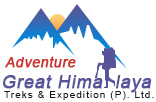
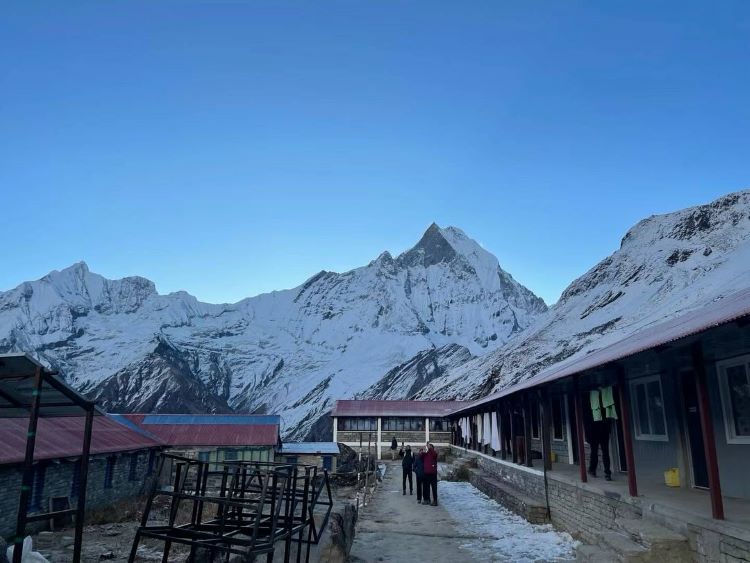
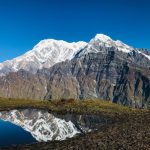 Saturday, August 30th, 2025
Saturday, August 30th, 2025
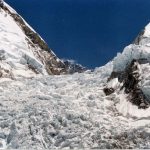 Wednesday, August 27th, 2025
Wednesday, August 27th, 2025
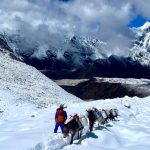 Wednesday, August 20th, 2025
Wednesday, August 20th, 2025
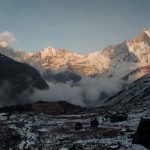 Wednesday, August 20th, 2025
Wednesday, August 20th, 2025
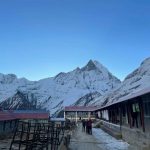 Wednesday, August 13th, 2025
Wednesday, August 13th, 2025
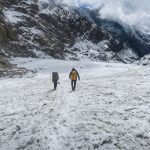 Wednesday, August 6th, 2025
Wednesday, August 6th, 2025
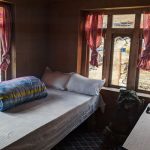 Monday, July 7th, 2025
Monday, July 7th, 2025
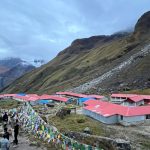 Thursday, July 17th, 2025
Thursday, July 17th, 2025
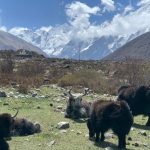 Monday, July 7th, 2025
Monday, July 7th, 2025
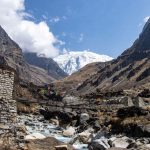 Friday, May 9th, 2025
Friday, May 9th, 2025
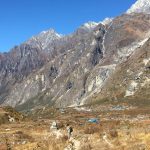 Saturday, June 14th, 2025
Saturday, June 14th, 2025
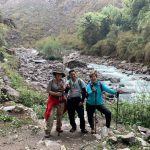 Wednesday, June 25th, 2025
Wednesday, June 25th, 2025
 Tuesday, August 5th, 2025
Tuesday, August 5th, 2025
